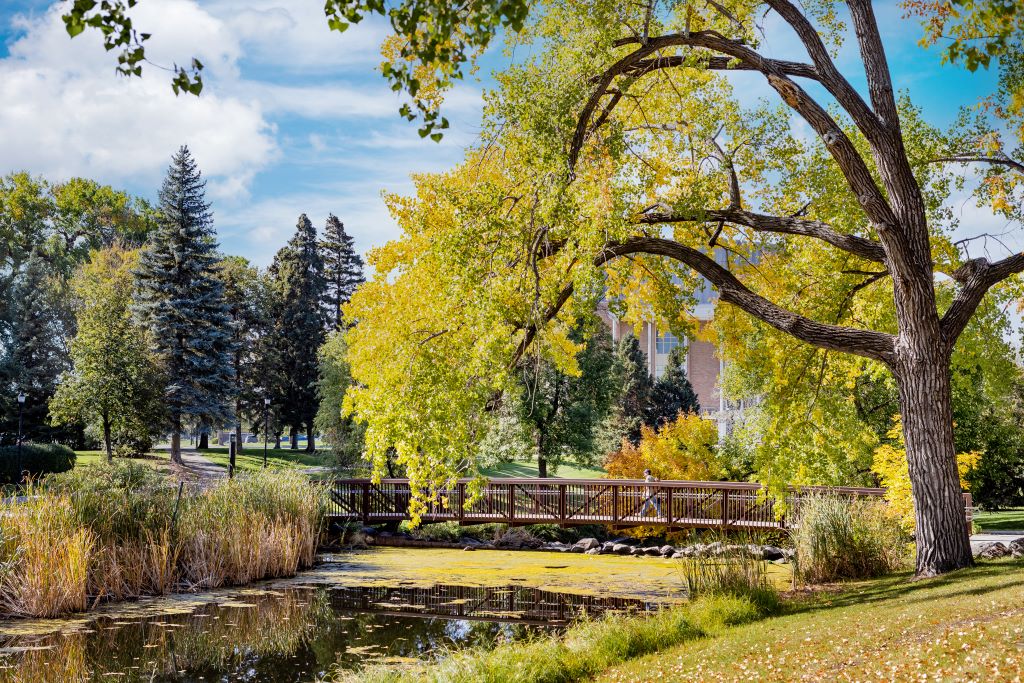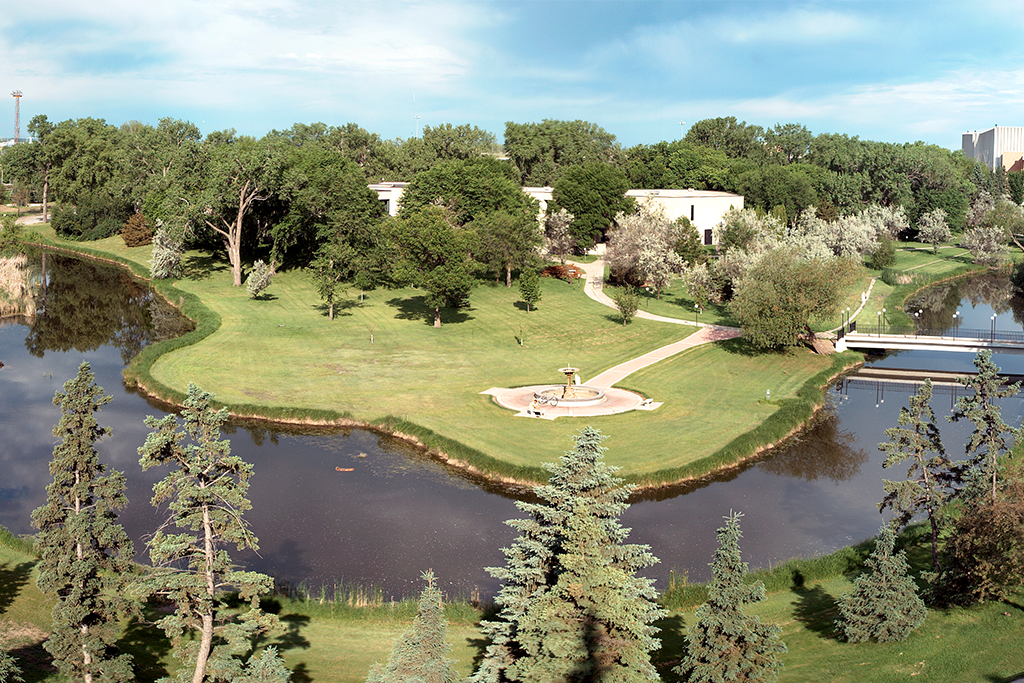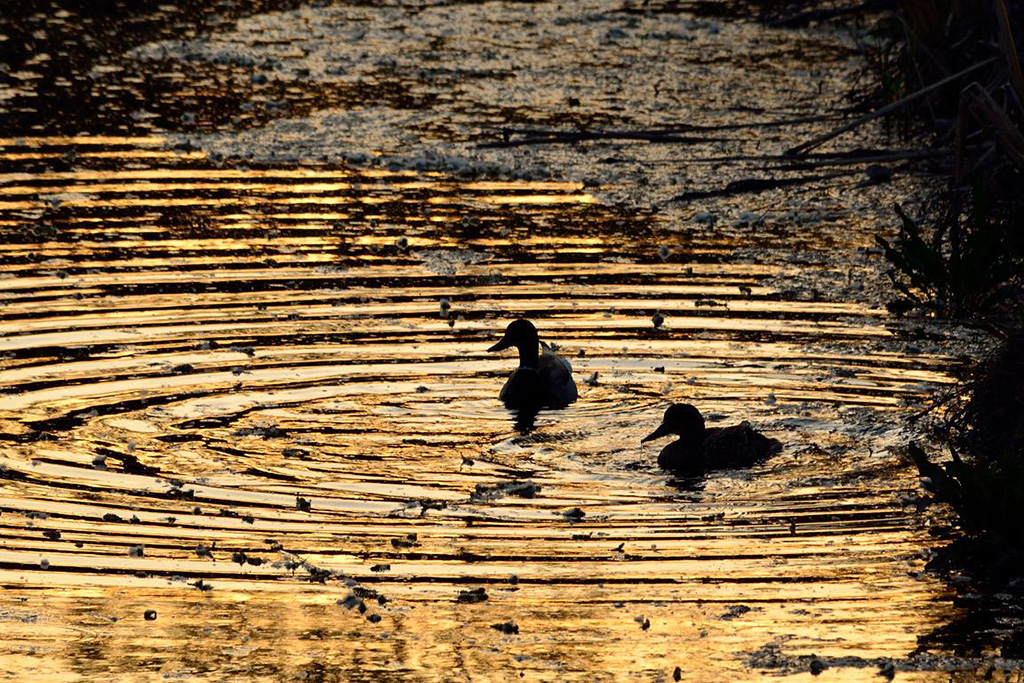With help from Audubon Society, English Coulee is for the birds
UND, Audubon Great Plains seek to transform English Coulee through 10-year partnership

Just in time for Earth Day, April 22:
The English Coulee, a staple of UND’s scenery, is getting a facelift thanks to a new partnership between the University and Audubon Great Plains.
As a part of the Urban Woods and Prairies Initiative, a project started to promote healthier habitats for wildlife in city limits; UND has signed a 10-year Memorandum of Understanding with Audubon Great Plains, which will see the Audubon chapter prepare and execute a restoration plan for the English Coulee and the land around it.
Tom Bures, assistant director of real estate and space at UND’s Facilities Management office, said that this project had been a long time in the making and should create a radical shift in the experience of using the coulee and the way that the campus uses the space.
The coulee is overrun with invasive species and overgrowth, prohibiting its natural plant and wildlife from fully flourishing. In addition, competing interests of neighborhoods surrounding the coulee made it hard for UND to maintain the coulee and its vegetation in a way that would satisfy the aesthetic wants of nearby homeowners and stimulate the area’s natural ecology at the same time.
Bures said that improving the maintenance of the coulee has been on the radar of Facilities for quite some time, noting that — for example — large trees on the trails by the coulee create a path that can be hard to see, making some people feel unsafe.
“We were talking about breaking the coulee down into seven sections, then maintaining one section every year so that you’d hit everything in that scenario every seven years,” he said.
This plan was in the initial stages when Bures spoke to Kim Greendahl, a city employee who works with the Greenway and its surrounding area. Greendahl recommended that Bures reach out to Audubon Great Plains, which had worked with the city of Grand Forks on restoring areas of the Greenway.
“We met with them, and they gave us a proposal for what amounts to a 10-year management plan,” Bures said. “They would come through and clear some of the undergrowth that’s not supposed to be there, plant new undergrowth of native species, remove trees and plant new ones that would allow the area to flourish.”
According to Bures, weeds and invasive species of plants such as buckthorn and burdock had overrun the coulee’s banks, and this had become unmanageable for UND. Having an organization like the Audubon Society, with its interest and expertise in promoting healthy and natural ecology, take the reins would ensure that the area’s rehabilitation went smoothly.
Hewitt and Bures both stressed that the agreement is meant to not only promote healthy wildlife and plants, but also encourage greater community access.
“One of my big pushes was for the safety and security of the trails around the coulee to be improved,” Bures said. “That’s always been somewhat of a concern for us. The trees and overgrowth can make those paths dark, so we’re trying to open that up so joggers and walkers can feel a little more secure.”
Audubon Great Plains has contracted Minnesota Native Landscapes, which provides construction and vegetation management services and specializes in native plant restoration, to oversee the English Coulee’s facelift.

“Blaine Keller of Minnesota Native Landscapes, whom we’ve been working with on the project, is extremely knowledgeable, and I think we’re off to a good start,” Bures said. “They started work on the coulee in January, and they’ve already started taking care of some of that undergrowth in the area.”
One of the significant components of the plan is to make good on UND’s initiative to plant more trees on campus. After nonnative and invasive species have been removed; new seedlings will be planted in their place.
The coulee’s natural habitat being restored also means that there will be more opportunities for UND’s biological science departments to study the area, which was another big incentive for the University to undertake the project, according to Bures.
Audubon’s Hewitt said plans are in place to increase student involvement near the English Coulee as waterway’s ecology diversifies.
“We are planning to get students involved in establishing pollinator gardens along the trails. The plan is for student clubs to sponsor and be responsible for the site management of those gardens.”
Bures concurred, adding that faculty members from the biology department, including associate professor of biology and UND Field Station Committee member Kathryn Yurkonis, would be involved in the restoration process as the project progresses.
Furthermore, Hewitt hopes that the restoration will improve the water, land, and diversity of trees and plants that make up the coulee’s environment, making the area more hospitable for new species of birds to inhabit.

“You’d be surprised at how much diversity an urban area like this supports already,” Hewitt said. “The efforts that we’re making — increasing diversity, getting those invasive species out there — that’s really going to be supporting waterfowl and shorebird species, due to the improvement in water quality of English Coulee.
“You’ll also see woodland species such as warblers, woodpeckers and owls. And then, as we’re dabbling more into the prairie grasslands, the migrating and breeding songbirds that are prevalent within the Grand Forks area will hopefully have a home there one day.”
The maintenance of the English Coulee will come at no expense to UND, says Bures, who mentioned that this venture is being funded federally through grants.
“This 10-year maintenance plan will perform the function of addressing things that were previously inadequate,” Bures said. “It’s going to be of benefit to the University, the homeowners in the area and, of course, the environment. The Audubon Society is doing a great service to the community and the University. It’s been a complete win for everyone involved.”



